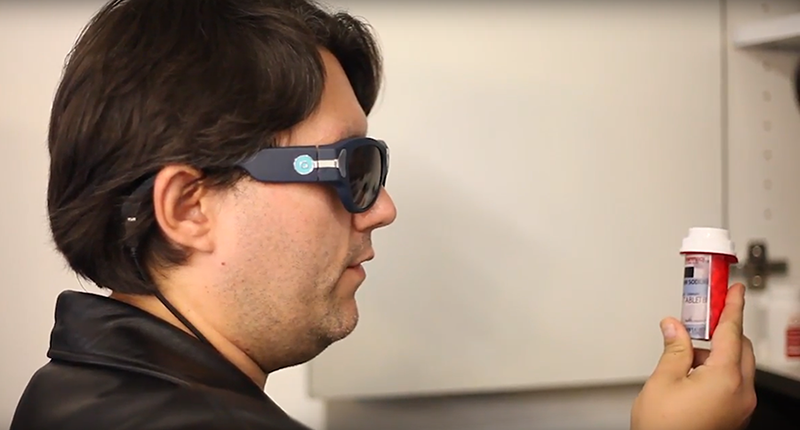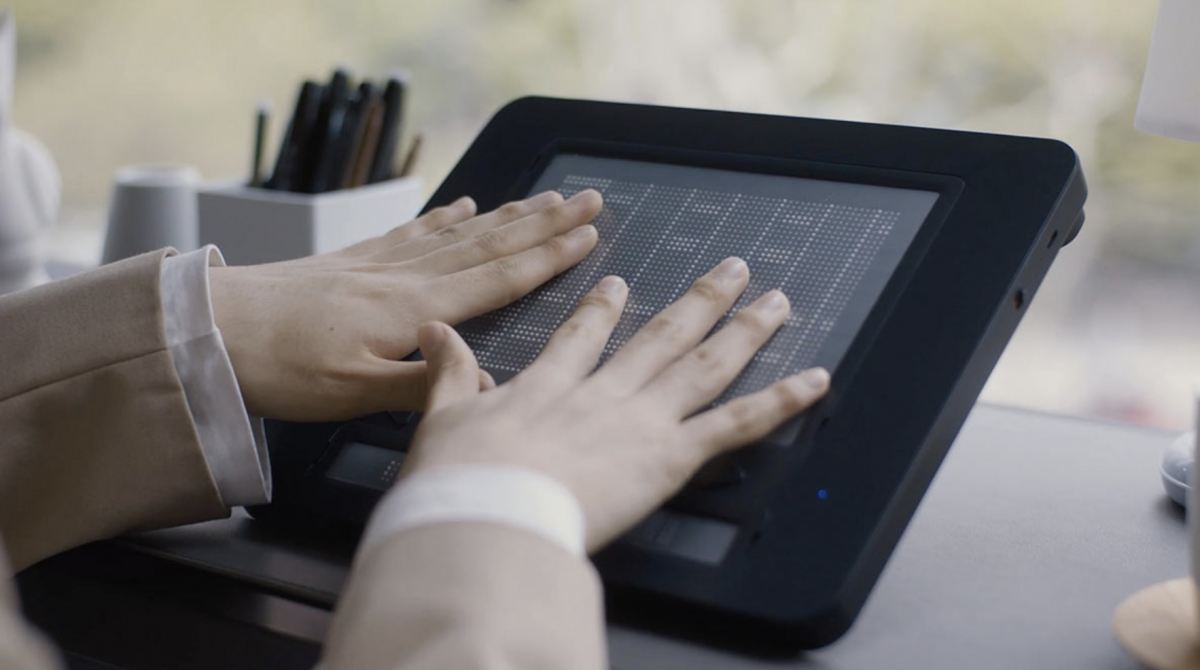Screen Readers for the Blind: Essential Tools for Digital Access
Screen Readers for the Blind: Essential Tools for Digital Access
Blog Article
Discover Cutting-edge Devices Made for the Aesthetically Impaired
The advancement of cutting-edge devices for the visually impaired represents a significant development in access and self-reliance. Technologies such as wise glasses with AI capabilities and mobile applications made to provide acoustic descriptions are improving daily experiences for customers. Furthermore, wearable devices that employ haptic responses improve environmental understanding, while modern-day Braille developments offer new means to involve with text. As these tools continue to advance, their influence on the lives of those with aesthetic impairments elevates essential questions regarding the future of inclusivity and autonomy in numerous facets of life. What lies ahead in this technological landscape?
Smart Glasses for Navigation

Smart glasses created for navigation are reinventing the way visually damaged individuals interact with their atmosphere. These advanced devices use a combination of electronic camera modern technology, expert system, and auditory feedback to give real-time info about surroundings. By employing barrier discovery systems, smart glasses can signal individuals to potential dangers, allowing safer wheelchair in both unknown and acquainted setups.
The combination of GPS technology additionally enhances navigating capabilities, enabling customers to get auditory instructions as they move. This hands-free approach not just fosters freedom but additionally empowers aesthetically impaired people to navigate city landscapes with increased self-confidence. Additionally, numerous smart glasses are furnished with features that determine spots and street indications, offering contextual details that enhances the individual experience.
Moreover, the development of these gadgets is continually progressing, with firms working to enhance the precision of things recognition and increase the array of navigational attributes. As smart glasses end up being extra cost effective and accessible, they hold the potential to substantially change day-to-day live for aesthetically damaged customers. Inevitably, these cutting-edge tools represent a vital action towards inclusivity, offering boosted flexibility and a greater sense of autonomy for individuals navigating the world around them.

Mobile Apps for Daily Living
How can mobile applications improve the lives of aesthetically damaged people? Mobile applications are transforming the method visually impaired individuals navigate their atmospheres, handle day-to-day jobs, and accessibility details. These applications provide important support through different capabilities, cultivating freedom and boosting lifestyle.
A number of ingenious mobile apps are designed particularly for daily living. As an example, applications like Be My Eyes link aesthetically impaired users with sighted volunteers by means of video clip telephone calls, allowing them to get real-time aid with jobs such as reading labels or navigating unfamiliar areas. Seeing AI, established by Microsoft, makes use of man-made intelligence to describe surroundings, reviewed message, and recognize things, properly changing a mobile phone into an effective device for everyday help.
Furthermore, navigation apps customized for the visually impaired, such as Aira and BlindSquare, supply audio-based instructions and environmental information, making it possible for customers to traverse their surroundings safely and with confidence. Beyond navigation and instant support, mobile applications likewise support company and job management, with features that aid individuals set reminders, develop to-do listings, and track appointments. In recap, mobile applications work as vital resources, empowering aesthetically damaged individuals to lead even more independent and fulfilling lives.
Wearable Technologies for Help
Empowerment through innovation is progressively obvious in the world of wearable gadgets designed to aid aesthetically damaged individuals. These ingenious devices integrate seamlessly right into day-to-day live, improving navigating and supplying important responses to customers. Wise glasses equipped with cams can acknowledge faces and review text out loud, allowing individuals to interact even more with confidence in social and specialist setups.
One more notable advancement is making use of haptic comments systems in wearable tools. These systems make use find more of resonances or various other responsive signals to communicate information concerning the individual's atmosphere, such as obstacles or changes in terrain, enhancing wheelchair and safety. Wearable innovations additionally consist of wristbands that link to smartphones, informing users to notices with subtle resonances, thus boosting connection without reliance on aesthetic signs.
As these modern technologies remain to advance, they are not only boosting self-reliance for visually impaired individuals but likewise fostering a better sense of addition in culture. By bridging the gap in between obstacles faced in daily living and the capacity for freedom, wearable modern technologies act as essential tools in the pursuit for equal rights and empowerment for those with aesthetic impairments.
Sound Summary Tools
Sound summary devices play an essential role in improving ease of access for aesthetically damaged people, supplying them with the ability to involve with visual media. Voice-activated assistive devices. These devices supply narrated summaries of vital aesthetic components in films, tv programs, and live performances, guaranteeing that customers can fully comprehend the context and feelings shared with visuals
Audio summary can be integrated right into different systems, including streaming solutions, cinema testings, and live theater. Several prominent streaming solutions currently consist of audio description as an accessibility attribute, allowing visitors to select it quickly. Along with traditional media, specialized applications likewise exist, giving audio descriptions for art exhibits, galleries, and other social occasions.
The performance of audio summary rests on the skill of the narrators, who need to convey visual information succinctly without diminishing the original audio. Developments in this area are also paving the method for even more customized experiences, where customers can change the degree of information and pacing according to their choices.
Braille Innovations and Devices
Braille technologies and gadgets have dramatically changed the method aesthetically impaired people engage with text and details. Modern developments have actually caused the advancement of flexible devices that improve proficiency and self-reliance amongst individuals. Especially, Braille present innovations have progressed, allowing for vibrant analysis experiences. These gadgets transform electronic text right into Braille, enabling individuals to access a vast variety of information on smartphones, tablets, and computer systems.
Moreover, portable Braille notetakers integrate conventional Braille input with modern-day functionalities, facilitating note-taking, organizing, and document modifying on the move. Braille displays and notetakers. These portable tools often feature text-to-speech capabilities, connecting the space between Braille and auditory information
In addition, cutting-edge Braille printers have actually emerged, allowing users to produce Braille tags, records, and instructional products effectively. This availability fosters greater involvement in specialist and academic atmospheres, inevitably advertising inclusivity.
In addition, research study into clever Braille modern technologies proceeds to broaden. Instruments that include expert system are being explored to provide real-time navigating support and contextual information, enhancing the user experience in varied settings. Overall, these innovations mirror a commitment to encouraging visually impaired people through modern technology, ensuring they can conveniently gain access to and engage with the globe around them.

Conclusion
The advancement of cutting-edge devices for the aesthetically impaired dramatically improves independence and high quality of life. These technologies not just foster greater addition but additionally promote freedom in daily go tasks, ultimately adding to a more accessible and fair society for visually impaired people.
As smart glasses end up being a lot more obtainable and budget friendly, they hold the possible to significantly transform everyday life for aesthetically damaged individuals. Mobile applications are revolutionizing the method aesthetically impaired individuals navigate their atmospheres, take care of day-to-day tasks, and gain access to details. Apps like Be My Eyes connect aesthetically impaired customers with sighted volunteers through video telephone calls, permitting them to receive real-time support with jobs such as reading tags or browsing strange areas.In addition, navigating apps tailored for the visually impaired, such as Aira and BlindSquare, use audio-based instructions and ecological information, enabling individuals to traverse their surroundings securely and with confidence.The development of ingenious tools for the aesthetically damaged dramatically boosts freedom frameless glasses and quality of life.
Report this page